Fernando Costa is a familiar sight at Fort Worth City Council meetings, giving presentations on one aspect or another of the city’s past, present, or future. As city planning director, he is the hub where many spokes on the city’s wheel connect.
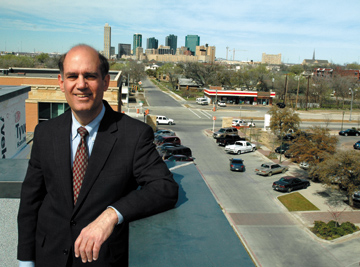 Whether the issue is zoning, road planning, or making commercial developments work, Costa is in the middle. On issues from Trinity River Vision to big ranches being subdivided for housing on Fort Worth’s ever-expanding edges to revitalizing older neighborhoods in Cowtown’s heart, his voice is perhaps the most influential in the city — Fort Worth’s “secret weapon,” as the mayor called him. But the reality is that Costa actually avoids the limelight as often as he stands in it, usually letting lower-level staffers make the presentations. It’s not that he’s shy or trying to avoid any controversy, it’s just that he knows how the political game works. A veteran of the urban planning game — 13 years in Atlanta and nine more in Fort Worth — Costa knows that elected politicians look down on any city staffer who gets too big. Stay in the background, he has learned, and more work gets done.
Whether the issue is zoning, road planning, or making commercial developments work, Costa is in the middle. On issues from Trinity River Vision to big ranches being subdivided for housing on Fort Worth’s ever-expanding edges to revitalizing older neighborhoods in Cowtown’s heart, his voice is perhaps the most influential in the city — Fort Worth’s “secret weapon,” as the mayor called him. But the reality is that Costa actually avoids the limelight as often as he stands in it, usually letting lower-level staffers make the presentations. It’s not that he’s shy or trying to avoid any controversy, it’s just that he knows how the political game works. A veteran of the urban planning game — 13 years in Atlanta and nine more in Fort Worth — Costa knows that elected politicians look down on any city staffer who gets too big. Stay in the background, he has learned, and more work gets done.
Nonetheless, Costa was front and center at a recent meeting, on two apparently unrelated issues. One was a zoning fuss in Arlington Heights, just west of downtown. The other was a report from Vision North Texas, which Costa chairs. The regional planning board encourages government bodies across 13 Metroplex counties to work together on — you name it — road construction, housing growth, and where the jobs are going to be located. For Costa, the two agenda items indeed were related. In fact, the reason he’s gotten so heavily involved in the long-term planning committee is that he sees everything as related.
Development on the outskirts of a city creates sprawl that is costly to everyone, he told the council, because it means infrastructure can never keep up with the needs. He champions urban infill, “urban villages” as he calls them — developments featuring the high-density and mixed-use buildings that used to make Fort Worth leaders cringe. “What does what happens in Parker and Johnson counties have to do with Ryan Place?” Costa asked the council. “Everything. These issues are all interrelated.” And then he gave them the big, scary numbers that explain why regional planning in North Texas is so vital. In the next quarter-century, he said, the numbers of households and jobs in the area will almost double from what they were in 2000. And if the cities don’t do something to limit urban sprawl, then the bill for the new roads needed to serve those ever-growing areas will be $45 billion. “Business as usual will not be successful or sustainable,” he warned.
The jury is still out on whether Fort Worth and other local governments are going to heed Costa’s warning in time. The things he believes are necessary to fight the sprawl — mass transit, high-density developments — are often lost on officials who still see North Texas planning as revolving around the automobile. He knows that “high density” is what so many Texans work to get away from — to graduate from anonymous apartments and mean little strips of grass to a big yard and a two-car garage, insulated from all the nasty city noise and traffic. And yet, his other item on the agenda that day had him, seemingly, advocating the opposite. A long list of homeowners on Byers Street in Arlington Heights had worked to downzone their street, from the category that allows duplexes and apartments to single-family only. They had signed petitions, gone through red tape and hearings, and now the change was up for a council vote.
But one property owner objected. He wanted to keep the higher zoning to increase his options, in case he sells his plot someday. He wanted the whole process thrown out on a technicality — a wrong street name on an original petition. Costa begged to differ: The petitions were corrected and all was in order. Yes, the original petitions were in error, he told council, but they’d been corrected and everything was aboveboard. This change will be good for the neighborhood, he said, and the council voted with him. The homeowners on Byers won’t have to worry about an invasion of townhomes. Costa doesn’t see the conflict between his two appearances that day. “Not every neighborhood can or should be high density,” he said after the meeting. “Our number-one priority is to work with neighborhoods and develop [them as] they really want. We want to manage the growth we are facing, not have the growth manage us.” That’s just part of the balancing act Costa spends his days addressing in America’s fastest-growing big city. Give some real estate developers everything they want, and condos will spring up on every street, and ranches will be converted into subdivisions that will cost billions in infrastructure. But on the other hand, if existing neighborhoods block all changes to preserve their comfortable existence, then the city is back at square one. It’s not about stopping development, but shaping it — not about preserving the city in amber, but keeping the blood pumping.
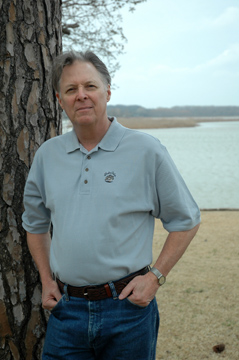
“We are spending a lot of time educating neighborhood associations about what choices they have,” Costa said. “We have people thirsting for knowledge about city planning and how it affects them. And the best way for them to learn … is to get them involved.” Neighborhood groups in Fort Worth have grown up in the last decade. They’ve taken on McMansion builders, wrestled with historic overlays, discovered the joys and sorrows of gas wells, and learned to flex their muscles at city hall. But by far their largest concern has been the most fundamental one: zoning. The city’s zoning history has left scars all over the landscape, and the reason is that real estate developers — starting in the 1960s — got any zoning they wanted. During the 1970s and 1980s, Fort Worth tended to use what is known as “cumulative zoning,” meaning land was zoned for the most extreme uses — mostly industrial — and then could be ratcheted down to uses like housing as the property owner or developer desired. Cumulative zoning, not surprisingly, was pushed by developers. It basically allowed them to choose land use depending on the market. If a company wanted land for one of its factories, no zoning change would be needed. But if a real estate speculator thought that multi-family housing would sell, the city would rubber-stamp that change.
Single-family neighborhoods found that the system provided them no protection. When Costa got here in 1998, he found a mess. “The city was rubber-stamping every zoning change, from subdivision plots to any change in use, because they had lost sight of their function, which is to provide leadership in long-range planning,” he said. “We had an extraordinary amount of bad zoning,” Costa said. “Not only were they poorly conceived, but the zoning maps themselves were totally inappropriate, with mismatches of housing next to industrial. Many years ago, we allowed real estate speculation to influence many bad zoning decisions, and we are still living with the consequences. A great deal of our staff time is [spent working] with neighborhood associations and business groups to rezone in accordance with what is needed for that area.” In 1998, Fort Worth’s zoning ordinance listed just one size category for single-family lots — 5,000 square feet or larger. On a lot of, say, 20,000 square feet, a property owner could build one house, or up to four. So in neighborhoods with large lots — out on Lake Worth, for example, where a single lot could include more than half an acre — when the housing boom started heating up on the city’s fringes, homeowners found out that the house next door could be torn down and replaced with three.
In the past five years, the city changed its rules to provide for a variety of single-family zoning classifications, with different rules for different lot-size ranges. For example, some neighborhoods set minimum lot sizes at 10,000 or 20,000 square feet, and that cannot be subdivided. Only one house can be built on the property. Joe Waller, president of the Lake Worth Alliance, a consortium of neighborhood groups, credits Costa with pushing through the badly needed changes. “We wanted [the zoning] to reflect reality,” he said. “Developers were coming in out here and just putting as many houses on the lots as they could. It was not good for the neighborhood, not good for the watershed around Lake Worth, and just not good for the bigger picture for this city. “Costa has always been accessible and helpful for us and other neighborhood groups,” Waller said. “The process can be daunting, because the developers all have consultants and lawyers, and all you have is an idea to make your neighborhood better.”
Costa’s “presence in this city is one of the most important things that could have happened,” Waller said. “He is a brilliant man and has a larger view with respect to growth and land use. So often this city has allowed too much control by developers without having the city say what the development should be. He has been able to do that.” The planning director sees Fort Worth as having unique characteristics that make his job fascinating and daunting at the same time. While most cities went through a white flight during the 1990s, Fort Worth did not, so that the population has remained diverse both in terms of race and income levels. The city is also not surrounded by dying “inner-ring suburbs” that have restricted new growth in many cities. Lastly, the city has a large amount of vacant “infill” properties, land that is close to the center of the city and without severe environmental cleanup costs and restrictions.
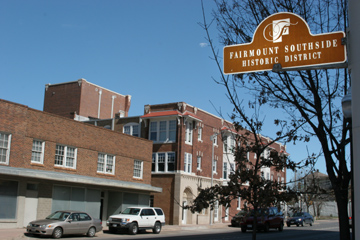 Urban revitalization is what Costa is known for, and he has some rather distinct opinions on where Fort Worth should go with the “urban village” concept. He has helped create 14 “neighborhood empowerment zones” throughout the city — areas that can use tax incentives, infrastructure improvements, and historic designations to spark new development. He has championed mixed-use zoning, which allows housing, for instance, to be located above retail establishments in a single structure, and he wants restaurants, theaters, and retail shops close enough to homes that walking to many destinations is an option, and where work environments can mix in as well. “Costa is a visionary and one of the best planning directors in the country,” said Fort Worth councilman Sal Espino. “The whole urban village concept started [locally] with him, and since he’s been here, the thinking in Fort Worth has changed. You just can’t keep building more housing out on the fringe and more and more freeways.”
Urban revitalization is what Costa is known for, and he has some rather distinct opinions on where Fort Worth should go with the “urban village” concept. He has helped create 14 “neighborhood empowerment zones” throughout the city — areas that can use tax incentives, infrastructure improvements, and historic designations to spark new development. He has championed mixed-use zoning, which allows housing, for instance, to be located above retail establishments in a single structure, and he wants restaurants, theaters, and retail shops close enough to homes that walking to many destinations is an option, and where work environments can mix in as well. “Costa is a visionary and one of the best planning directors in the country,” said Fort Worth councilman Sal Espino. “The whole urban village concept started [locally] with him, and since he’s been here, the thinking in Fort Worth has changed. You just can’t keep building more housing out on the fringe and more and more freeways.”
Brenda Sanders Wise, president of the Garden of Eden Neighborhood Association, which abuts the Haltom City border on Fort Worth’s East Side, said Costa “understands the vision of the city very well. “He is honest, and we go straight to him because he is easily approachable,” she said. “Everything goes through him, and he knows how the system works. When we wanted zoning changes [from light industrial to single family] he helped us a lot. We were a very small community, and we are educated and speak with intelligence. Most in city hall assume you aren’t intelligent. Fernando never did that.” Still, Costa’s view of mixed-use zoning does not sit well with all the neighborhood groups, though they are careful to point out he does not force it on everyone. “There are some areas of the city where some of this pedestrian-friendly, mixed-use development can work,” said one neighborhood association president who didn’t want her name used. “But [Costa] has to realize where he is. This is Fort Worth, Texas, and we all want to have our house with a big backyard, and we don’t want to be living on top of each other. We get in our cars when we go to work or shopping or anything else. And do you think anyone walks around here when it is 100 degrees in August?”
The city planner’s answer to that question is that people in Fort Worth have selective memory. “People have short memories, because the lifestyle where the car has dominated everything only goes back two generations.” he said. “Before World War II, Fort Worth didn’t have this obsession with cars and trucks and actually did have moderate-density, mixed-use zoning. Most of the older neighborhoods we have today were built during that time. I would argue if we want to be authentically Fort Worth, we will learn from the experience of those who built these great neighborhoods we admire and are looking to recreate today. “In our own zoning regulations, we promote the use of automobiles,” he continued. “We require too much parking, often up front, so the streetscape resembles a wasteland. We don’t design our city for people, we design our city for automobiles. So we shouldn’t be surprised when we get a product that is homogenized suburbia, and we shouldn’t be surprised when people are alienated by the growth environment. We shouldn’t be surprised when people can’t walk from place to place, and the result is we have a public health crisis with our air quality.”
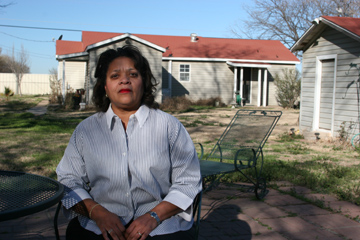 Through the years, as Costa has quietly pushed for changes to make Fort Worth more livable, he has done it with an eye toward the learning curve. He wants to nudge the city into a light-rail system — separate from The T and possibly funded by city bonds — but hasn’t pushed it hard because neither the public nor the politicians are quite on board yet. His mixed-use concept is also gaining momentum, but only after careful planning that planted it first on West Seventh Street and in the Hospital District. The key word here is planning, because that is what Costa does, and he does it in more ways than just helping figure out zoning and where the roads should run. Costa has a deep, resonant voice that some staffers love to do impressions of. He’s usually low-key, but laughs loudly at jokes about the political process, a mind-set that allows him to take it all with a grain of salt. Recently divorced, he lives in a 1920s house in Mistletoe Heights and loves to talk about his three daughters — one grown up and two still in high school. But he also loves to talk about his intellectual passion for city planning, and he can spend hours debating planning issues.
Through the years, as Costa has quietly pushed for changes to make Fort Worth more livable, he has done it with an eye toward the learning curve. He wants to nudge the city into a light-rail system — separate from The T and possibly funded by city bonds — but hasn’t pushed it hard because neither the public nor the politicians are quite on board yet. His mixed-use concept is also gaining momentum, but only after careful planning that planted it first on West Seventh Street and in the Hospital District. The key word here is planning, because that is what Costa does, and he does it in more ways than just helping figure out zoning and where the roads should run. Costa has a deep, resonant voice that some staffers love to do impressions of. He’s usually low-key, but laughs loudly at jokes about the political process, a mind-set that allows him to take it all with a grain of salt. Recently divorced, he lives in a 1920s house in Mistletoe Heights and loves to talk about his three daughters — one grown up and two still in high school. But he also loves to talk about his intellectual passion for city planning, and he can spend hours debating planning issues.
Costa is recognized by his peers as one of the top urban planners in the country. After Hurricane Katrina, the American Planning Association chose Costa to chair a panel that made recommendations on how New Orleans could be brought back to health, as even a better city than before. He served as the planning director in Atlanta from 1987 to 1998 and was one of the driving forces there in planning for the 1996 Olympics. You could say planning is in Costa’s blood. He was born in Cuba in 1953 to an upper-middle-class family — the kind of folks who were forced to leave with the Fidel Castro revolution. The family business was ranching and development; Costa’s grandfather was turning a big ranch outside of Havana into a housing development just before the family left for Miami in 1961. His father worked as an investigator for future U.S. Attorney General Janet Reno while she was the Dade County district attorney. Fernando went to Georgia Tech, where he majored in planning and civil engineering. He did a stint as an officer in the U.S. Army Corps of Engineers, then 11 years as the planning director for a North Georgia regional planning group, before taking a similar gig in Atlanta.
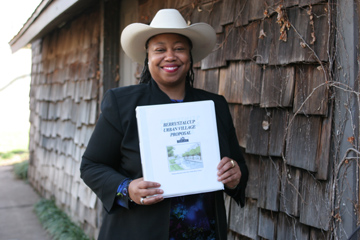 So why leave Atlanta for the more modest confines of Cowtown? “The first thing to realize is that Atlanta is smaller than Fort Worth in population, and was at the time I left,” Costa said. “And when I looked at the inner city, the differences between the two, the ability for growth here, and the economic vitality of the area — I saw so many more positives in Fort Worth.” But politics also had a lot to do with that decision. During his early years in Georgia, he enjoyed working under mayors Andrew Young and Maynard Jackson. In 1994, Bill Campbell was elected mayor, and Costa began to see changes, though he won’t get into specifics. Campbell’s administration was accused of playing favorites with minority development firms (Campbell is African-American), and in the 1990s, following an earlier period of hot development, the city experienced a slowdown in economic growth. Campbell was eventually indicted on charges of racketeering, bribery, tax evasion, and wire fraud. Convicted only of tax evasion (and acquitted on the rest), he’s now serving 30 months in federal prison.
So why leave Atlanta for the more modest confines of Cowtown? “The first thing to realize is that Atlanta is smaller than Fort Worth in population, and was at the time I left,” Costa said. “And when I looked at the inner city, the differences between the two, the ability for growth here, and the economic vitality of the area — I saw so many more positives in Fort Worth.” But politics also had a lot to do with that decision. During his early years in Georgia, he enjoyed working under mayors Andrew Young and Maynard Jackson. In 1994, Bill Campbell was elected mayor, and Costa began to see changes, though he won’t get into specifics. Campbell’s administration was accused of playing favorites with minority development firms (Campbell is African-American), and in the 1990s, following an earlier period of hot development, the city experienced a slowdown in economic growth. Campbell was eventually indicted on charges of racketeering, bribery, tax evasion, and wire fraud. Convicted only of tax evasion (and acquitted on the rest), he’s now serving 30 months in federal prison.
Working in such a politically charged city eventually wore him down. But Costa said he also left because of what Atlanta had become — or failed to become. “Atlanta, for most of its history, even to the present day, has struggled with its identity,” Costa said. “It really hasn’t ever had a sense of what it is and what it wants to be. “Do you remember the name of the mascot from the 1996 Olympics?” he asked. “Of course you don’t, and hardly anyone does. It was literally an amorphous creature … designed to have no identity of its own, and the name fit that: ‘What Is It.’ “It was just a complete flop, an amorphous purple blob,” he said. “The marketing people in response to the weak reaction from the public renamed it Izzy. But there was just no connection to Atlanta. They put down a blue stripe to mark the marathon course, and the joke after the games was the blue stripe was the mark Izzy left when they dragged it out of town.” Having a sense of a city’s identity is important for what Costa is doing. “This city has always welcomed the offbeat, the eclectic, and those attitudes are linked to basic values,” the planner said. “That makes what I do more fun, because I always know how the identity fits in.
“Fort Worth has a sharp identity relative to Dallas,” he said. “We share the same general geography and economic ties, but culturally we are very different places. I think Fort Worth needs to outgrow this obsession with Dallas. I think we can take pride and define ourselves by who we are, and not who we are not.” So the guy planning much of the future of Fort Worth likes walking instead of driving, mass transit that is not just for the poor, housing that goes up instead of out. And he doesn’t like being obsessed with the evil beast to the east. Obsessions with cars, sprawl, and Dallas are where Fort Worth has been, not where we’re going, he says. For him, the city’s present includes a lot of fence-straddling, as developers deal with the idea that not all their proposals will be automatically OK’d and that big new subdivisions aren’t the city’s idea of progress. And neighborhood groups, while getting wilier about working with and fighting city hall, are dealing with the reality that their future will probably be different — in some good ways, some bad — than their past.
Last November, the city council voted on a zoning change that many suspected was a done deal. Oil businessman Duer Wagner wanted to build a three-story office building on the southwest corner of Montgomery Street and Crestline Drive on the city’s West Side and needed to change the zoning from multi-family to office. Under the existing zoning, six units could be built on the vacant lot. Developers knew high-priced units wouldn’t sell on such a busy street, and the Arlington Heights Neighborhood Association had long opposed apartment buildings in its midst. So a nice-looking office building would look good by comparison, right? But what eventually happened revealed the growing power of the city’s neighborhood groups. The Arlington Heights group didn’t like the height of the building, didn’t like the idea of commercial uses moving west into the neighborhood from Montgomery, didn’t like the precedent they figured was about to be set.
“There were a lot of problems from our perspective,” said association president Christina Patoski. “The zoning changes increased the height, moved it into the neighborhood more, and we didn’t think there was enough parking. But precedent is a key to this. If one group comes in and gets their changes, the next one is going to say, ‘You did it for him, so you have to do it for me.’” Patoski and her group got enough signatures to require a “supermajority” — seven votes — to ratify the zoning change. Only six council members voted for it, and so the little office building on a busy street was killed. Carter Llewellyn, president of Llewellyn Realty and owner of the property, said he and other property owners along Montgomery were blindsided by the vote. As far as he’s concerned, “an office building like this on every corner … would be an asset for the neighborhood.” The street’s too busy for most kinds of housing, which would just add to the traffic anyway, Llewellyn said. Retail hasn’t worked well on that side of the street, but an office building could work — and seemed to fit the neighborhood’s guidelines.
Costa was in the middle once again. Development on Montgomery is inevitable, what with the Bass family’s new rodeo arena in the works. And Arlington Heights’ location, next to the museums and with shops and restaurants already nearby, makes it ripe for the “urban village” treatment. But the neighborhood association was resisting. How to solve this? Do what they always do in Fort Worth political circles — appoint a committee. Councilman Carter Burdette, whose District 7 includes the area, named a dozen people to the panel, representing the University of North Texas Health Science Center, the museums, real estate developers, and the neighborhood association. Not all are pleased. One real estate developer groused that the planning director was listening to “special-interest groups” — i.e., the neighborhood. A bad case of the shoe being on the other foot for once — and pinching. Patoski sees “some common ground” among committee members and said her group wants existing businesses like the Montgomery Street Café and the Jazz Café to remain. She also thinks the city might want to restrict buildings on the west side of Montgomery to single-story structures.
Llewellyn thinks that new retail with loft living spaces above might work on some parts of the street, along with office buildings. But certainly not single-story stuff. “We have our differences, but Fernando is sort of the mediator, and at least we are talking,” he said. If this city has some weird zoning from the past to deal with, maybe it’s partly because it also has a weird structure within city hall to handle the issue. Three separate departments — Economic Development, Development, and Planning — all help stir Fort Worth’s urban planning broth. The Planning Department is more concerned with policy and comprehensive plans, while Development does building inspections and runs zoning changes past the Zoning Commission. In simple terms, one department sets the guidelines, while the other implements them. And the Economic Development Department works with businesses to invest and redevelop parts of the city.
It’s not hard to see how the arrangement adds layers to a system that is difficult to manage anyway. Not to mention the competition for funding and staffing among three city departments whose functions overlap. In fact, a study commissioned by the city last year on development and planning, the Zucker Report, said there were “unhealthy tensions” between the Planning and Development departments. The report recommended the city move some of the zoning responsibilities to the Planning Department. Costa would say only that he supports “any changes that would serve the citizens better.” Development Director Bob Riley said the two separate departments are needed because “If we were together, you might lose the vision of long-range planning. “Last year we had so many new housing permits, and if I was the director of both planning and development, I would have pulled every planner I had and put them into the housing permit area,” he said.
Many citizens — both businesspeople looking for permits and homeowner groups looking for help — seem frustrated by their dealings with city hall on the practical aspects of development and zoning, though not on the larger policy issues. Regina J. Blair, president of the Stop Six Sunrise Edition neighborhood association, said her experiences have led her to believe the two departments should be consolidated. “We had a duplex in our area that had been abandoned for years, was 75 percent burned, and had been rezoned for commercial,” said Blair, who has a bachelor’s degree in architecture and master’s degrees in business and urban planning. “They were doing work but had no permit, and we couldn’t get an inspector out. It was only when we went through Planning that we got things done. Fernando makes sure his staff listens to you, and my experience is that the Development [Department’s] permit side doesn’t.” “Most municipalities put those two departments together, because building inspections and zoning and planning studies are all part of the same process,” she said. “Everyone should be understanding what everyone else is doing. If I did not have a planning degree, I would have no idea what they are doing. I just kept thinking every time I drove by that place, ‘Are they making this a duplex again? I thought we rezoned that.’”
It’s hard to find anyone with a bad word for Costa’s work these days. After the Vision North Texas presentation, Mayor Mike Moncrief said, “We have the strongest voice at that table, and [Costa is] one of our secret weapons.” The city’s top planner says there really isn’t any big secret about what he does. It’s just a matter of dealing with political pressures, balancing the interests of neighborhoods and developers, and trying to change parts of the city’s mind-set — all at the same time. “You do that by always assuming that all the people we deal with have some stake in what is going on in this city,” Costa said. “If you let them work it out and present some choices, the market and the educated people active in our community will make things happen that should. But choices are the key for us. “If your choices are Suburb Type A or Suburb Type B, and you don’t have any other choices, then yes, the market will gravitate toward suburban lifestyle,” he continued. “For many years, we didn’t have downtown housing as a choice, and if you brought downtown housing up even 10 years ago, people would have laughed you out of the room. It would have been seen as absurd. Today, there is an extraordinary rush to move into downtown Fort Worth because that choice is there.”
He decided years ago that his best tool was sharing his knowledge with others — treating those who haven’t studied this complicated subject of urban planning not as enemies, but as potential allies. “We don’t agree with him all the time,” Patoski said, “but we do have complete respect for him. He has allowed the residential property owners to participate in the future of their neighborhoods. His staff spends a lot of time educating and talking to our zoning committees. “Fernando helps to give us the tools and teaches us how to use the tools. Not many in city hall do that.”
You can reach Dan McGraw at dan.mcgraw@fwweekly.com.











